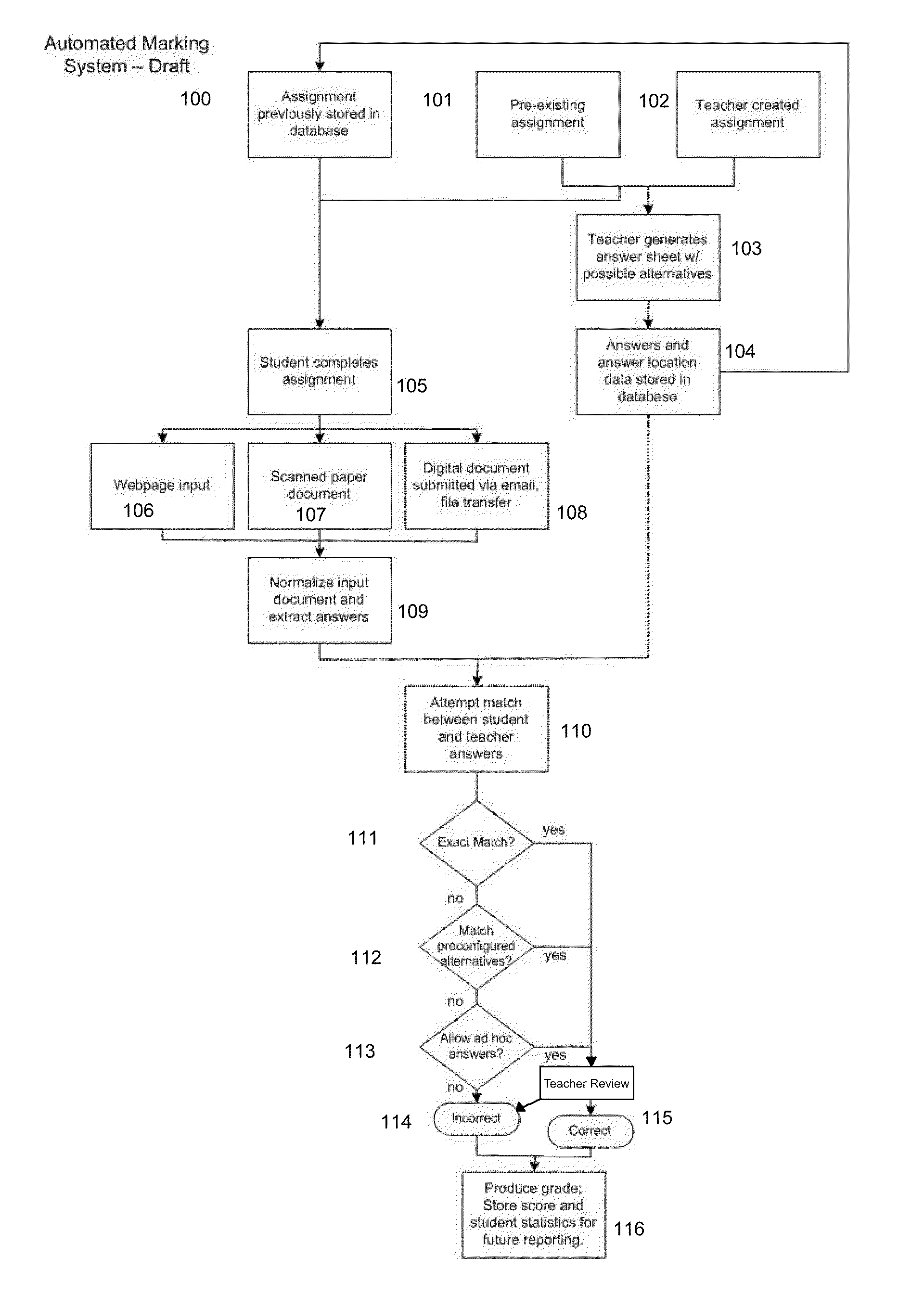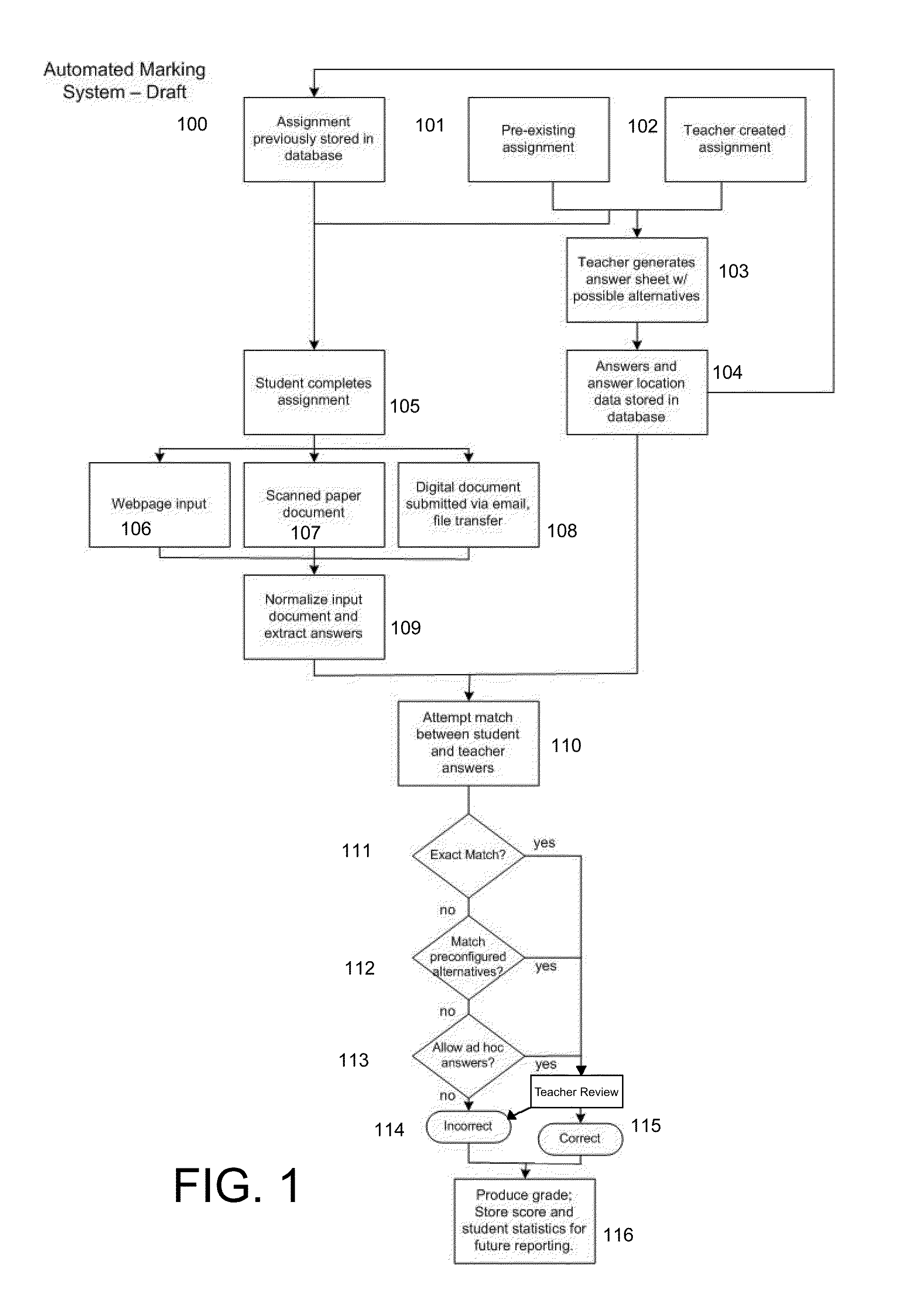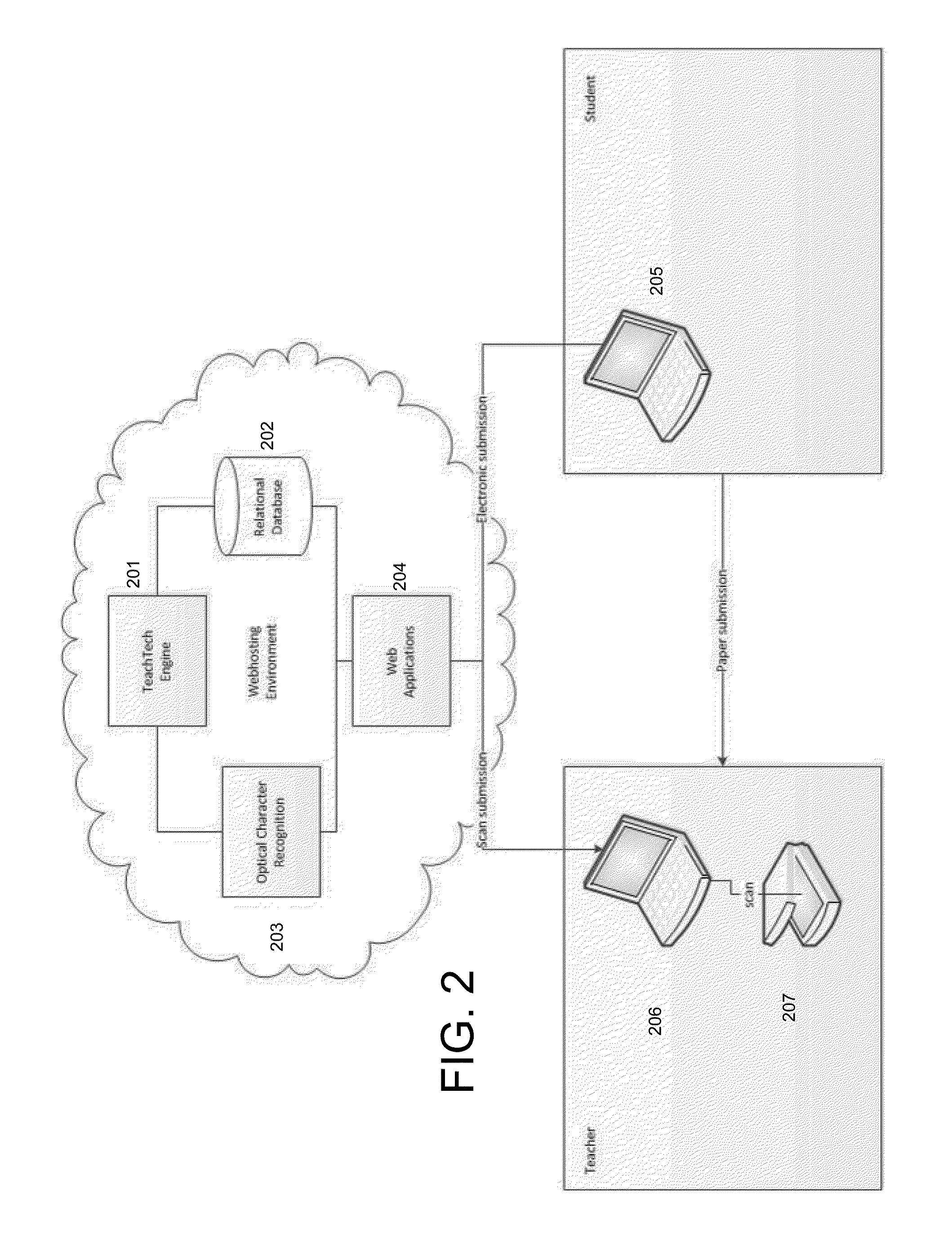Automated Assessment and Analysis System
a technology applied in the field of automatic assessment and analysis system, can solve the problems of inefficient use of time spent creating and grading each assignment, no mechanism for other teachers to access, and multiple teachers exerting significant amount of time creating substantially the same assignment. , to achieve the effect of improving the education process and less tim
- Summary
- Abstract
- Description
- Claims
- Application Information
AI Technical Summary
Benefits of technology
Problems solved by technology
Method used
Image
Examples
second embodiment
[0030]In a second embodiment, TEACH-TECH is accessible via the web-based database of the invention or a similar web-based portal. The benefit of this feature is that the user can access TEACH-TECH from any computer by remotely utilizing a computer with the required components. This would allow teachers to create assignments using the TEACH-TECH wizard without having to be tied to a particular location.
third embodiment
[0031]In a third embodiment, TEACH-TECH is downloaded onto a particular computer via a removable media device such as a compact disc. The user would then be able to connect that computer to the web-based database of the invention in order to access the benefits of the online database.
[0032]A person skilled in the art will recognize there are a multitude of other ways to access software of this type, and that these examples are meant to exemplify a few options, not limit the method in which the grading software is utilized.
PUM
 Login to View More
Login to View More Abstract
Description
Claims
Application Information
 Login to View More
Login to View More - R&D
- Intellectual Property
- Life Sciences
- Materials
- Tech Scout
- Unparalleled Data Quality
- Higher Quality Content
- 60% Fewer Hallucinations
Browse by: Latest US Patents, China's latest patents, Technical Efficacy Thesaurus, Application Domain, Technology Topic, Popular Technical Reports.
© 2025 PatSnap. All rights reserved.Legal|Privacy policy|Modern Slavery Act Transparency Statement|Sitemap|About US| Contact US: help@patsnap.com



